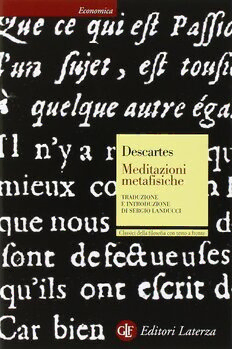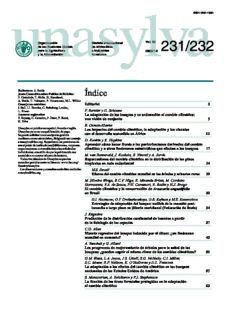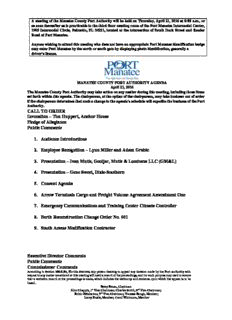
Strange Baryon Electromagnetic Form Factors and SU(3) Flavor Symmetry Breaking PDF
Preview Strange Baryon Electromagnetic Form Factors and SU(3) Flavor Symmetry Breaking
JLAB-THY-08-928 Strange Baryon Electromagnetic Form Factors and SU(3) Flavor Symmetry Breaking Huey-Wen Lin ∗ Thomas Jefferson National Accelerator Facility, Newport News, VA 23606 Kostas Orginos † Department of Physics College of William Williamsburg, VA 23187-8795 and Thomas Jefferson National Accelerator Facility, Newport News, VA 23606 (Dated: Dec. 26, 2008) We study the nucleon, Sigma and cascade octet baryon electromagnetic form factors and the effectsofSU(3)flavorsymmetrybreakingfrom2+1-flavorlatticecalculations. Wefindthatelectric andmagneticradiiaresimilar; themaximumdiscrepancyisabout10%. Inthepion-massregionwe 9 explore,boththequark-componentandfull-baryonmomentshavesmallSU(3)symmetrybreaking. 0 We extrapolate the charge radii and the magnetic moments using three-flavor heavy-baryon chiral 0 perturbation theory (HBXPT). The systematic errors due to chiral and continuum extrapolations 2 remainsignificant,givingrisetochargeradiiforpandΣ−thatare3–4standarddeviationsawayfrom n theknownexperimental ones. Within thesesystematics thepredicted Σ+ and Ξ− radii are 0.67(5) a and0.306(15) fm2 respectively. Whenthenext-to-next-to-leadingorderof HBXPTisincluded,the J extrapolated magnetic moments are less than 3 standard deviations away from PDG values, and thediscrepancy is possibly dueto remaining chiral and continuum extrapolation errors. 0 1 PACSnumbers: 11.15.Ha,12.38.Gc13.40.Em13.40.Gp14.20.Dh ] t a l - p I. INTRODUCTION e h [ The study of hadron electromagnetic form factors reveals information important to our understanding of hadronic structure. However, experimental measurements on baryons with strange quarks, such as hyperons, are difficult due 2 totheirunstablenature. Fromthetheoreticalperspective,studiesinthenonperturbativeregimeofquantumchromo- v 6 dynamics(QCD)havebeendifficultwithoutresortingtomodel-dependentcalculationsormakingapproximations. In 5 lattice QCD, we are able to compute the path integral directly via numerical integration, providing a first-principles 4 calculation of the consequences of QCD. Such study of hadronic form factors together with experiment will serve as 4 valuable theoretical input for understanding hadronic structure. . 2 The nucleon form factors have been calculated on the lattice by many groups, and calculations are still ongoing[1, 1 2, 3, 4, 5, 6, 7, 8, 9, 10, 11]. However, few have devoted effort to calculating the form factors for other members 8 of the octet. The JLab/Adelaide group[12, 13, 14] performed form factor calculations for the entire octet, and 0 QCDSF collaboration studied the spin structure of the Lambda[15]. Both of these calculations used the quenched : v approximation, where fermion vacuum-polarization loop contributions are ignored; this introduces an uncontrollable i systematicerrorintotheircalculations. Werecentlyperformedafirstlatticecalculationofthehyperonaxialcoupling X constants[16] with dynamical fermions, where the SU(3) flavor symmetry breaking was investigated and found to be r a non-negligible. TheassumptionofSU(3)flavorsymmetryhasbeencommoninstudiesinvolvingbaryonicobservables. Forexample, in the determination of V from hyperon decays reported in the PDG[17] (and thus in much experimental work us following from it), exactSU(3) is assumed in the g /f entry. Symmetry-breakingeffects in the axialcouplings could 1 1 therefore impact the world-average V value. The SU(3) breaking of baryon masses is relatively small, as in the us Gell-Mann–Okubo relation[18, 19] (which has also been studied in a full-QCD lattice calculation[20]) or the decuplet equal-spacing relation. However, this small breaking is in contrast to other quantities with substantial breaking, suchasthe magneticmoments(assuggestedbyColemanandGlashow[21])ortheaxialcouplingconstants[16,22]. In latticeQCDcalculations,wecanvarytheup/downandstrangequarkmassestomoveawayfromtheSU(3)-symmetric point and explicitly observe flavor-breakingeffects. Inthiswork,weconcentrateontheelectromagneticpropertiesofoctetbaryons. ThisallowsustostudySU(3)flavor symmetry within the octet family. The structure of this paper is as follows: In Sec. II, we define the operators used ∗Electronicaddress: hwlin@jlab.org †Electronicaddress: kostas@wm.edu 2 m010 m020 m030 m040 m050 Nprop 612 345 561 320 342 mπ (MeV) 354.2(8) 493.6(6) 594.2(8) 685.4(19) 754.3(16) MN (GeV) 1.15(3) 1.29(2) 1.366(18) 1.490(14) 1.558(8) MΣ (GeV) 1.349(19) 1.41(2) 1.448(12) 1.524(14) 1.558(8) MΞ (GeV) 1.438(11) 1.475(16) 1.491(10) 1.546(12) 1.558(8) TABLE I: Quantities associated with the gauge ensembles used in our calculation for this calculation and detail how we extract the electromagnetic form factors from lattice calculations. In Sec. III, we discuss the momentum dependence of the form factors and examine the validity of the dipole extrapolations that are commonly used on lattice data. We also extract the electric charge radii, magnetic radii and magnetic moments forthenucleon,SigmaandcascadebaryonsanddiscusstheSU(3)flavor-breakingofthesequantities. Ourconclusions are presented in Sec. IV, and some detailed numbers obtained from this calculation are listed in the appendix. II. LATTICE SETUP For this calculation we use 2+1 flavors of improved staggered fermions (asqtad)[23, 24, 25] for the expensive sea quarks (in configuration ensembles generated by the MILC collaboration[26]), and domain-wall fermions (DWF)[27, 28,29,30]forthevalencesector. Thepionmassrangesfromaround350to750MeVinalatticeboxofsize2.6fm. The gauge fields entering the DWF action are HYP[31, 32, 33] smeared to reduce the residual chiral symmetry breaking onthe lattice,andthe baryoninterpolatingfieldsuse gauge-invariantGaussiansmearedquarksourcestoimprovethe signal. The source-sink separation is fixed at 10 time units. The number of configurations used from each ensemble ranges from 350 to 700; for more details, see Table I (or Table 1 in Ref. [16]). The interpolating fields we use for the nucleon, Sigma and cascade octet baryons have the general form χB(x) = ǫabc[φaT(x)Cγ φb(x)]φc(x), (1) 1 5 2 1 where C is the charge conjugation matrix, and φ and φ are any of the quarks u,d,s . For example, to create a 1 2 { } proton, we want φ =u and φ =d; for the Ξ , φ =s and φ =d. 1 2 − 1 2 The electromagnetic form factors of an octet baryon B can be written as F (q2) B(p) V (q) B(p) (q) = u (p) γ F (q2)+σ q 2 u (p)e iqx (2) ′ µ B ′ µ 1 µν ν B − · h | | i 2M (cid:20) B (cid:21) from Lorentz symmetry and vector-current conservation. F and F are the Dirac and Pauli form factors. On the 1 2 lattice, we calculate the quark-component inserted current, V = φγ φ, with φ = u,d light-quark current and φ = s µ µ strange-quark vector current. Due to the small chiral symmetry breaking of DWF at finite lattice spacing (on the order of (m a)2 1%[32]), the O(a) terms for the vector current are highly suppressed. By calculating two-point res ≪ and three-point correlatorson the lattice, we will be able to extract the form factors from Eq. 2. The octet two-point correlators measured on the lattice are Γ(A2C),T(ti,t;→p) = tr T(χBC)(χBA)† = n En2(E→pn)(+→pM) nZn,AZn,Ce−En(→p)(t−ti), (3) (cid:10) (cid:0) (cid:1)(cid:11) X where AandC indicate the smearingparameters,h···i indicatesthe ensemble average,andEn(→p) is Mn2+p2. χB (with B N,Σ,Ξ ) is a baryon interpolating field. The states in Eq. 3 are defined to be normalized as ∈{ } p h0|(χBC)†|p,sin = Zn,Cus(→p), (4) where the spinors satisfy E(→p)γt i→γ →p +MB us(→p)u¯s(→p) = − · . (5) 2E(→p) s X 3 FIG. 1: The dispersion relation of the N (left), Σ (middle) and Ξ (right) on ensemble “m040”. The x-axis is in units of `2πa−1´2. L The projection used is T = 1(1+γ )(1+iγ γ ). Since we are only interested in the ground state of each baryon, we 4 4 5 3 tune the smearingparametersandthe source-sinkseparationso thatonly the ground-statesignalremainsrelevantat larger t. Therefore, n=0 in Eq. 3. The energyof eachbaryonis measuredusing a single-exponentialfit to the larger-timedata. The massesare listed in Table I. We measure baryons with these momenta: 2π →pi = L a−1→n (6) 0 1 1 1 2 2 2 →n ∈ 0,0 , 1,1,0 , 1,1, (7) 0 0 0 1 0 0 1 andtheir rotationalequivalents.We checkthe dispersionrelationE(→p)= Mn2+p2/ξf2onthe ensemble “m040”for each of the octet baryons with our lattice data and find that ξf is consisteqnt with 1; see Figure 1. Similarly to the two-point function, the lattice three-point function is Γ(µ3,)A,TC(ti,t,tf;→pi,→pf) = htr T(χBC)Vµ(χBA)† i= Zn′,A(→pZf)Zn,C(→pi) n n′ V (cid:0) (cid:1) XX e−(tf−t)En′(→pf)e−(t−ti)En(→pi) B Vµ B′ , (8) × ×h | | i where n and n index energy states and Z is the vector current renormalization constant, which we will set to its ′ V nonperturbative value[32]. Again, we are only interested in the ground state of each baryon, so n=n =0 in Eqs. 3 ′ and 8. If we denote smearing parameters as A, C, ..., I, we have the freedom to construct a ratio of three- and two-point functions: R = ZVΓ(µ3,)A,TI(ti,t,tf;→pi,→pf) Γ(D2E),T(t,tf;→pi) Vµ Γ(I2C),T(ti,tf;→pf) vuΓ(F2H),T(t,tf;→pf) u t Γ(C2C),T(ti,t;→pf) Γ(F2H),T(ti,tf;→pf), (9) × vuuΓ(A2A),T(ti,t;→pi)vuuΓ(D2E),T(ti,tf;→pi) t t where all the Z(→p) factors are exactly canceled, as well as the remaining time dependence. In this work, we choose D = F = P, where P denotes a point source and choose the rest of the smearing parameters to be G, denoting Gaussian smearing. Thus, R = ZVΓ(µ3,)G,TG(ti,t,tf;→pi,→pf) Γ(P2G),T(t,tf;→pi) Vµ Γ(G2G),T(ti,tf;→pf) vuΓ(P2G),T(t,tf;→pf) u t Γ(G2G),T(ti,t;→pf) Γ(P2G),T(ti,tf;→pf), (10) × vuuΓ(G2G),T(ti,t;→pi)vuuΓ(P2G),T(ti,tf;→pi) t t 4 FIG. 2: RVµ from Eq. 10 for hΣ|φ¯γ4φ|Σi (left) and hΞ|φ¯γ4φ|Ξi (right) with φ=u/d (upper panels) and φ=s (lower panels) for our lightest-pion ensemble. Figure 2 shows data from our lightest-pion ensemble for the Σ and Ξ (with at-rest initial and final baryonstates) for thestrange-andlight-quarkvectorcurrents. Afterafewearlytimeslices,theexcitedstatesstarttodieoutandleave the data relatively time-independent. Throughoutthis work,wefix the sinkmomentumto →pf =(0,0,0)andvarythe initialmomentumamongstthe list in Eq. 6. The form factors F in Eq. 2 are connected to R (Eq. 9) through 1,2 Vµ → 2MBpy−2iMBpx −iMBpx+iE(MB,pi)px+2MBpy RRRRVVVV1234 = −√22√√√√M2222MM√B√+BBEEE√√(M((MEE−MB((2BBMM,M→,p,→pBB→pBi)i,,ip)→→pp)ix√pii−z))M√√2iBMMM+BBBEp++(yMEE((BMM,→pBBi,,)→→ppii)) −(22M√√222B−√MM−22MBBME2√√B(B√Mp√EE2xBiM((p−EMM,z→piB((MBBMMi√),,BB)→→Bpp√Ep,−ii→y(p))MM+E√√i)Bi(B√MMpM+,y→BBMpBEEi++,(B()→pMMEE+iB((B)EMM),,(→→ppBBMii,,))B→→pp,ii→p))i) · FF12 !. (11) We solve for F using singular value decomposition (SVD) at each time slice from source to sink with data from all 1,2 momenta with the same q2 and all µ. (Tables VII–XVIII in the appendix summarize all the results.) For example, Figure3showsthelightvectorcurrentinsertedΣandΞformfactordataobtainedfromEq.11. Thefinalformfactors are obtained from a fit to the plateau. Another common set of form factor definitions, widely used in experiments, are the Sachs form factors; these can be related to the Dirac and Pauli form factors through q2 G (q2) = F (q2) F (q2) (12) E 1 − 4M2 2 B G (q2) = F (q2)+F (q2). (13) M 1 2 In this work, we only calculate the “connected” diagram, which means the inserted quark current is contracted with the valence quarks in the baryon interpolating fields. Onthe lattice, wecalculate the matrixelement B Vφ B with Vφ =φγ φ. Using SU(2) isospinsymmetry, we can µ h | | i connect the proton and neutron matrix elements via up pVu p = nVd n (14) ≡ h | | i h | | i dp pVd p = nVu n . (15) ≡ h | | i h | | i Therefore, the proton and neutron form factors are 2 1 Gp = (G ) (G ) (16) E,M 3 E,M up − 3 E,M dp 1 2 Gn = (G ) + (G ) , (17) E,M −3 E,M up 3 E,M dp 5 FIG. 3: The light-quark vector current inserted Σ (left) and Ξ (right) form factor F1,2 for all momenta →q at mπ ≈600 MeV. Different symbols represent different transfer momenta: triangles (n2 = 0), diamonds (n2 = 1), reverse triangles (n2 = 2), squares (n2 =3), pentagons (n2 =4), circles (n2 =5), stars (n2 =6). where (G ) are the Sachs form factors obtained from the pVu p matrix element. In the case of the hyperons E,M up h | | i Σ and Ξ, lΣ Σ+ Vu Σ+ = Σ Vd Σ (18) − − ≡ h | | i h | | i sΣ Σ+ Vs Σ+ = Σ Vs Σ (19) − − ≡ h | | i h | | i lΞ Ξ0 Vu Ξ0 = Ξ− Vd Ξ− (20) ≡ h | | i h | | i sΞ Ξ0 Vs Ξ0 = Ξ Vs Ξ . (21) − − ≡ h | | i h | | i Similarly, for Σ and Ξ baryons GΣ+ = 2(G ) 1(G ) (22) E,M 3 E,M lΣ − 3 E,M sΣ GΣ− = 1(G ) 1(G ) (23) E,M −3 E,M lΣ − 3 E,M sΣ GΞ− = 1(G ) 1(G ) (24) E,M −3 E,M lΞ − 3 E,M sΞ GΞ0 = 2(G ) 1(G ) . (25) E,M 3 E,M lΞ − 3 E,M sΞ Figure 4 shows examples of the plateaus for the each of the transfer momenta obtained with Sachs form factors at m 600 MeV for Σ+ and Ξ . (Tables XIX–XXX in the appendix summarize all the results.) π − T≈he magnetic form factors are naturally calculated in units of e , where M is the baryon mass calculated in its corresponding pion sea. In experiment, the nuclear magneton2MeB is generalBly used in describing the magnetic 2MN moments for all baryons. Therefore, to compare with experimental values, we need a conversion factor of MN MB multiplying our magnetic form factors and moments. III. NUMERICAL RESULTS In this section, we first discuss the behavior of the form factors as functions of momentum transfer squared and compare our data with experimental expectations. Furthermore, we explore the conventional dipole extrapolation used on the form factors and determine that the dipole fit could fail for certain quantities. Later in this section, we discuss the transversestructure of the baryonby studying the chargeand magnetic radii, the magnetic moments and the SU(3) flavor symmetry breaking in these quantities. 6 FIG. 4: The Σ+ (left) and Ξ− (right) form factors GE,M for all momentum-transfer dependence at mπ ≈600 MeV. Symbols arethesameas Figure3. NotethatGBM hereare inunitsofthenaturalmagneton 2MeB,wheretheMB is thebaryonmass on the600-MeV pion sea. A. Momentum Dependence of Form Factors Studying the momentum-transfer (Q2) dependence of the elastic electromagnetic form factors is important in understanding the structure of hadrons at different scales. There have been many experimental studies of these form factors on the nucleon. A recent such experiment, the Jefferson Lab double-polarizationexperiment (with both a polarized target and longitudinally polarized beam) revealed a non-trivial momentum dependence for the ratio Gp/Gp . This contradicts results from the Rosenbluth separation method, which suggested µ Gp/Gp 1. The E M p E M ≈ contradictionhas been attributed to systematic errorsdue to two-photonexchange that contaminate the Rosenbluth separation method more than the double-polarization. (For details and further references, see the recent review articles,Refs.[34, 35, 36].) Lattice calculations canmake valuablecontributions to the study ofnucleonformfactors, since they allow access to both the pion-mass and momentum dependence of such form factors. In addition, lattice calculations can report individual quark contributions to the baryon form factors. Furthermore, by varying the light-quark masses we can study SU(3) flavor symmetry breaking effects in octet baryons. The upper-left panels in Figures 5, 6 and 7 show the ratios µ GB/GB, where µ is the magnetic moment on the B E M B lattice takenfrom Sec. IIID (B stands for p, Σ+ and Ξ respectively). The straight line on eachplot is located at 1, − theexpectedvalueforthenucleon. Thelower-leftpanelsshowGB;ineach,theQ2 =0pointsareingoodconsistency E with 1. The right-column plots show the magnetic form factors divided by their magnetic moments, GB/µ . M B First, we focus on the nucleon system, which has been widely studied by experiments and lattice calculations.1 In both µ Gp/Gp and Gp, there is a decreasing trend as Q2 increases. The pion-mass dependence is rather mild p E M E in the case of µ Gp/Gp . The slope of µ Gp/Gp is roughly consistent with those measured in double-polarization p E M p E M experiments, around 0.14. (For example, see the summary plots in Figure 17 of Ref. [35].) The dashed lines in − these plots are the fitted forms of Ref. [34] for the proton and Ref. [37] for the neutron; for this ratio, our points are distributed around the lines, showing there is consistency with the experimental values. Gp, /Gp /µ and /Gn /µ E M p M n showsdistinguishablebutsmallpion-massdependence. Asthepionmassdecreases,ourdataappearstotrendtowards the dashed lines which represent fits to the experimental data. The hyperon Σ and Ξ form factors are more poorly known compared with the nucleon case. Similar to the ratio of its SU(3) flavor partner, the ratios µΣ+GΣE+/GΣM+ and µΞ−GΞE−/GΞM− are around 1 within our Q2 range,and there is mild pion-mass dependence in our study. Most of the µ GΣ+/GΣ+ values are slightly below experimental proton Σ+ E M fitted line, while the µΞ−GΞE−/GΞM− points are distributed aroundthe line, except for those from685-MeVpion mass. Since the effect of replacing the up/down quark in the proton is likely suppressed in the ratios of the individual form 1 Hereweonlyuseasubsetofthenucleondataavailablefortheseensembles: thosewhichoverlapwiththehyperonmeasurementsforthe Sigmaandcascade baryons. TheLattice HadronPhysicsCollaboration(LHPC)publishedapaperongeneralizedpartondistributions (GPDs),whichcoversslightlymoreconfigurations[5],andtheywillpublishananalysisusingdifferentsource-sinkseparationsandhigher statisticsinthenearfuture. 7 FIG. 5: Nucleon form factors. Left: The ratios µpGpE/GpM (top) and GpE (bottom). Right: The magnetic form factor for the proton and neutron divided by their magnetic moments. Different symbols represent different pion-mass ensembles: triangles (m010), squares (m020), reverse triangles (m030) and diamonds (m040). The dashed lines are plotted using experimental form-factor fit parameters[34, 37]. factors, it is not surprising to find that these hyperon form factor ratios are not far from experimental proton line. GΣE+, GΣM+/µΣ+ and GΣM−/µΣ− have mild discrepancies from nucleon case. The single replacement of a light quark inthe nucleontoastrangeinthe Σ baryonhasamildchangeonthe Q2 dependence ofthe formfactors. The cascade form factors (GΞ− , GΞ−/µ and GΞ0/µ ) are larger than the nucleon case, more dramatically for the lightest | E | M Ξ+ M Ξ0 quark. Thepion-massdependence issmallsincethedominantquarkflavor(strange)islesssensitivetochangesofthe up/downmassesinthe seaandvalence sectors. Overall,the hyperonformfactorsareslightly largerthanthe nucleon ones, up to 15% in certain cascade channels. B. Validity of the Dipole Extrapolation A widely adopted momentum extrapolation in lattice calculations for electromagnetic form factors is the dipole form (0) (Q2) = F , (26) F 1+ Q2 2 M2 D (cid:16) (cid:17) where M is the dipole mass. To demonstrate how well dipole form works for Dirac and Pauli form factors, we can D look at 12 (0) r′ = F 1 . (27) Q2 s (Q2) − ! F If the dipole form describes the momentum dependence of the form factor, there will be no momentum dependence in r . ′ We first concentrate on the case of Dirac form factors, where (0) = F (0) is calculated directly on the lattice 1 F (unlike F (0), which would require extrapolation). Figure 8 shows the results from our N, Σ and Ξ baryons for each 2 inserted quark current. We see almost no momentum dependence of r for all of the six matrix elements in Figure 8. ′ This is an indication that the dipole-form is a good description of the data. There are a few cases, such as the “m020” set that seem to deviate from the dipole form at large Q2, but a dipole fit still goes through most of the 8 FIG. 6: Sigma form factors. Left: The ratios µΣ+GΣE+/GΣM+ (top) and GΣE+ (bottom). Right: The magnetic form factors for theΣ+ and Σ− divided bytheir magnetic moments. Symbols are thesame as Figure 5. FIG.7: Cascade form factors. Left: Theratios µΞ−GΞE−/GΞM− (top)andGΣE+ (bottom). Right: Themagnetic form factors for theΞ− and Ξ0 divided by theirmagnetic moments. Symbols are thesame as Figure 5. points. One exception is the light-quark current for the Ξ baryonmatrix element in the “m010” set. In this case the centralvalueofr changesabout10%asonegoestolargemomentum. Whenquarkcomponentsarecombinedtoform ′ the full baryon form factors, this discrepancy does not occur, possibly due to cancellation between different quark components. Overall,we observe that r for all baryonsand most of the quark contributions within the baryonsis in ′ good agreement with a constant with respect to Q2. In the F case, where F (0) is an unknown constant depending 2 2 onthe matrix element,we find thatthe dipole descriptionis alsoreasonableforboth quarkcomponentsandbaryons. ItiseasytoextendEq.27totheelectricformfactorG ,andthe resultsareshowninFigure9. Asbefore,thelargest E discrepancy from the dipole description occurs for most of the “m020” set’s quark matrix elements. However, in this 9 FIG. 8: Dirac mean-squared radii (in unitsof fm2) asdefined in Eq.27 as afunctions of Q2 (in unitsof GeV2) for N (left), Σ (middle) and Ξ (right) for each Vφ FIG. 9: Electric mean-squared radii (in units of fm2) as a functions of Q2 (in units of GeV2) for N (left), Σ (middle) and Ξ (right) for each Vφ casethe dipole formseems thatit doesnotdescribe the datawell. AlthoughforG nosuchdiscrepancyis observed, M we need to look for alternative forms to fit the data. One simple extension is 1 G = (28) E (1+Q2/M2)p e withp=1,2,3,4formonopole,dipole,tripoleandquadrupole. WearealsoinspiredbyfitformsusedinRefs.[34,37] to describe the experimental data: n a τk G(Q2) = k=0 k (29) 1+ n+2b τk P k=1 k with τ = Q2 . Unfortunately, we do not have comparable amPounts of data (and as wide range of Q2) as experiment 4M2 toadoptthesamenumberofparametersforthe fit. Therefore,weconstrainthefitformtogoasymptoticallyto1/Q4 at large Q2 and to have G (Q2 =0)=1: E AQ2+1 1 G = , (30) E CQ2+1(1+Q2/M2)2 d where C may be constrained to be positive to avoid putting unphysical poles within our Q2 range. The choice of C =0 andA free we call “dipoleV0”;C >0 and A free we call “dipoleV1”; andC >0 and A>0, “dipoleV2”. Since the Ξ matrix elements deviate from the dipole form the most, we chose them to test for these new fit forms. Table II summarizes the fitted χ2/dof using these different fit forms and the electric mean-squared charge radii obtained from the fits to the light-quark component of the cascade. We find that using “dipoleV1”, we get a coefficient C that is consistent with zero; the fitted results are very close to the result from “dipoleV0”. The extracted electric mean-squaredcharge radii obtained from dipole fit forms are as much as 8% larger than those from the fit form that describes the lattice data well. Therefore, for the rest of this paper, we will use “dipoleV0” to fit quark-component G and use the standard dipole for all the other form factors. E 10 m2(GeV2) monopole dipole tripole quadrupole dipoleV0 dipoleV1 dipoleV2 π 0.1256(15) 0.462(16) 0.381(12) 0.357(11) 0.345(10) 0.370(10) 0.368(11) 0.381(12) [7.64] [0.31] [0.28] [0.9] [0.12] [0.15] [0.47] 0.246(2) 0.353(14) 0.305(11) 0.289(10) 0.282(10) 0.328(10) 0.328(8) 0.305(11) [0.87] [1.17] [2.63] [3.7] [0.43] [0.54] [1.75] 0.3493(17) 0.370(9) 0.318(7) 0.301(6) 0.293(6) 0.322(5) 0.314(16) 0.318(7) [6.74] [0.09] [1.89] [3.82] [0.02] [0.02] [0.14] 0.463(3) 0.338(11) 0.292(9) 0.278(8) 0.271(8) 0.294(7) 0.27(2) 0.292(9) [4.15] [0.36] [1.03] [1.85] [0.43] [0.48] [0.54] TABLE II: Cascade electric mean-squared charge radii, hrE2ilΞ, in units of fm2 from different fit forms. The square brackets indicate theχ2/dof for each fit. C. Charge Radii The mean-squaredelectric charge radii can be extracted from electric form factor G via E d G (Q2) r2 = ( 6) E . (31) h Ei − dQ2 (cid:18) GE(0) (cid:19)(cid:12)Q2=0 (cid:12) Similar definitions can be used to find the Dirac and Pauli radii, r (cid:12)and r respectively, where the relations are 1,B 2,B r2 =r2 + 3 κB with κ = F (Q2 =0). In Subsec. IIIB, we discuss an alternative fit form, “dipoleV0”, that E,B 1,B 22m2 B 2,B B works better in our kinematic region. Therefore, we will use this form to extract mean-squared electric radii; the numbers are summarized in Table III and Figure 10. In the left-hand panel of Figure 10, we plot the quark contributions to the nucleon, Sigma and cascade baryons. The upper plotdisplaysthe dominant(two-valence)quarkcontributionsinthep,Σ andΞ, while the loweroneshows the single-quark contributions. These charge radii tend to increase in the light sector, while the strange sector is relatively flat as one changes the pion mass. The rightmost points are closest to the SU(3) point, where the quark- contribution differences are the smallest. As one increases the difference in light and strange-quark masses, only the strange-quark contribution in the baryon starts to show differences depending on the baryon species, while the light-quarkcontributionseemstobeindependentofitssurroundingenvironmentforpionmassesaslightas350MeV. Itisexpectedthatthestrangecontributiondisplaysrelativelysmallerchargeradius,sincethestrangequarkisheavier and thus has shorter Compton wavelength. We further compare the strange-quark contributions in the Σ and Ξ, as shown in Figure 11. The strange quark in the cascade has slightly larger contribution to the charge radii than in the Sigma, but overall they agree within 1.5σ. This also shows that the quark contribution is not much affected by the environmental baryon, at least down to 350-MeV pion mass. In the right-hand panel of Figure 10 we plot the electric charge radii with the neutron and Ξ0 omitted, since they are neutral particles and G (Q2) 0 within our statistical errors. Firstly, we see that there is small SU(3) E, n,Ξ0 symmetry breaking between t{he SU}(3) p≈artners, p and Σ+ (or Σ and Ξ ); their charge radii are consistent within − − statisticalerrors. Asimilarobservationcanalsobemadeforthepreviouslatticequenchedstudy,Ref.[13]. Weobserve roughlythe same slope for the chargeradiiofp and Σ+/ baryons;however,our Ξ has about half the increase with − − decreasing pion mass; this difference could be caused by the quenched approximation. Overall, the SU(3) symmetry breaking in the charge radii is much smaller than what we observed in our study of the axial coupling constants[16]; this suggests that different physical observables can have substantially different responses to the replacement of one quark by another in a baryon. For charge radii, the effect is negligible. For the extrapolation of charge radii2 to physical masses, we adopt continuum three-flavor heavy-baryon chiral 2 Inthiswork,weuseHBXPTtoperformthemassextrapolationforchargeradii. Otherextrapolations,suchasFinite-RangeRegulation (FRR),areusedforoctetchargeradiionquenchedlatticedatainRef.[12],applyingcorrectionstotheeffectivefieldtheorytoaccount forquenching.
The list of books you might like

The Subtle Art of Not Giving a F*ck

Atomic Habits James Clear

Do Epic Shit

The Mountain Is You

Meditazioni metafisiche

Quasi-optimal convergence rate for adaptive mixed finite element methods

UFO Mail No 079 2006

Alison's Antithesis in The Marriage of Sir Gawain

Un canalla que no lo era

Cahiers du GRM, 8

Immaginari postdemocratici. Nuovi media, cybercultura e forme di potere

Del electrón al chip

Cambio climático y productos forestales no madereros

Un suspiro por sus orejas

The War Trail by Elmer Russell Gregor

Jappa no Amane (Complete)

Otoko no Musume Days v01 c01-06

The War Stories Of Private Thomas Atkins by Various

Departments of Veterans Affairs and Housing and Urban Development, and independent agencies appropriations for 1994 : hearings before a subcommittee of the Committee on Appropriations, House of Representatives, One Hundred Third Congress, first session

ERIC ED358183: A Manual for 20/20 Analysis: A Tool for Instructional Planning.

ERIC ED359556: Middle School Pupils Write Tankas.



